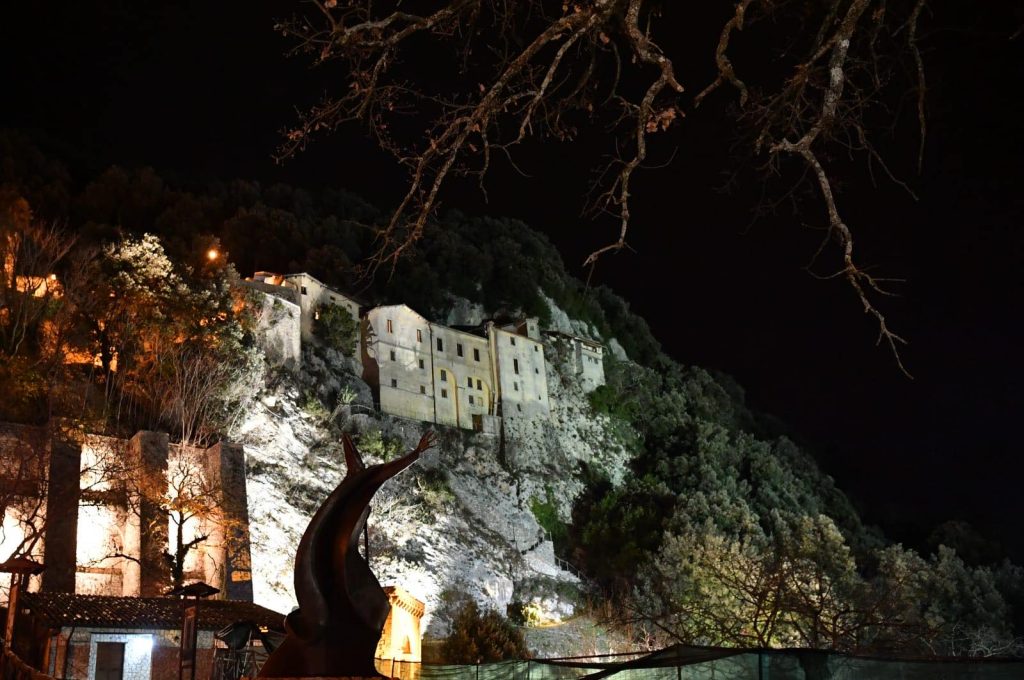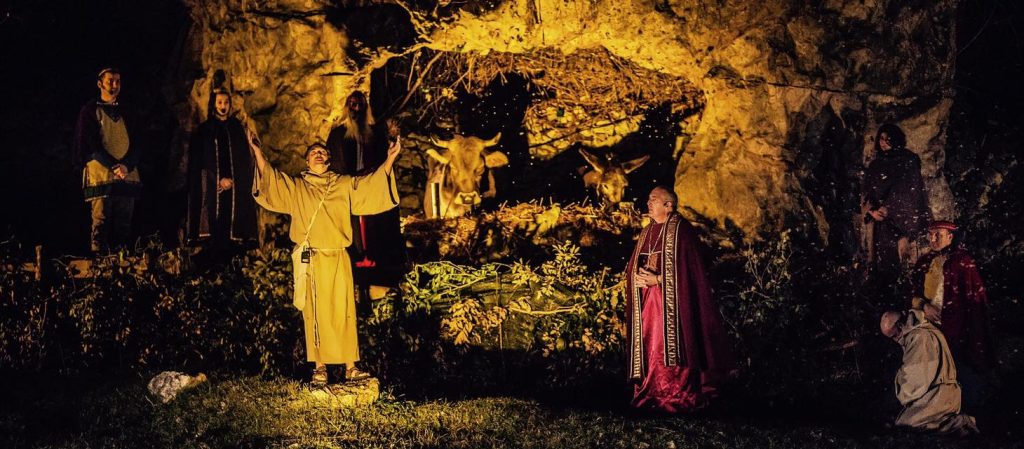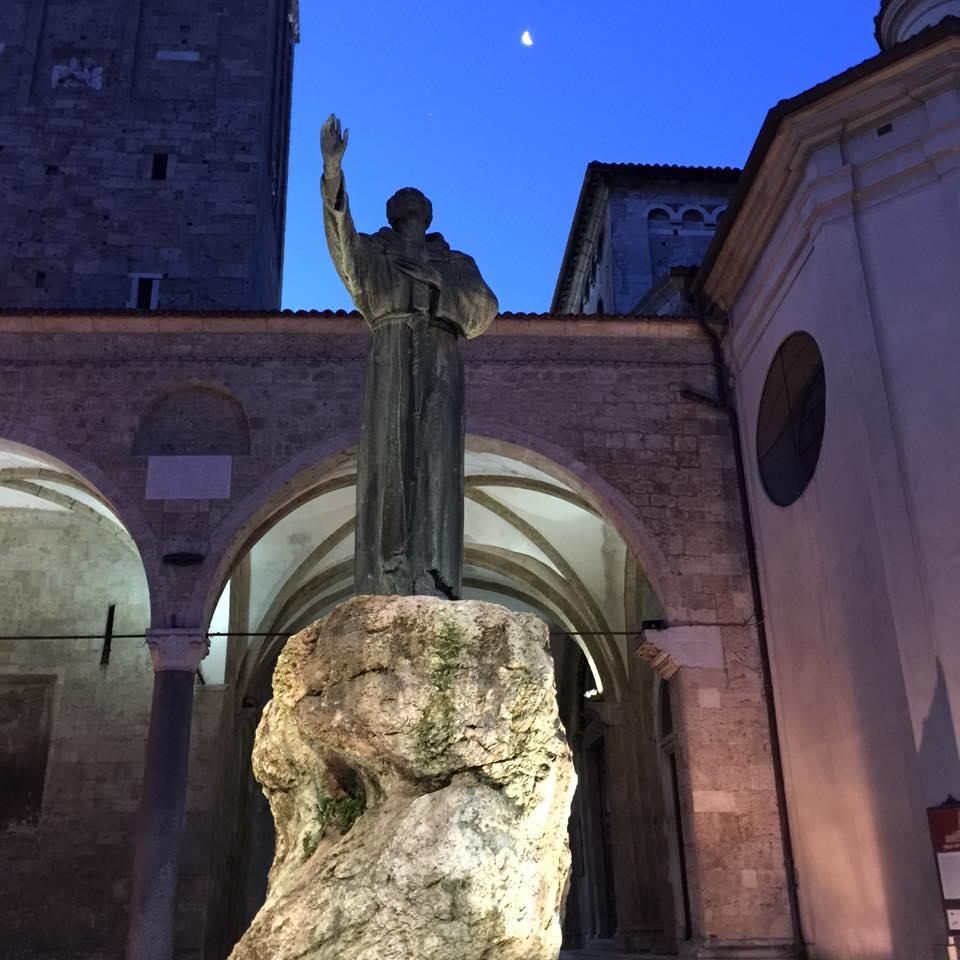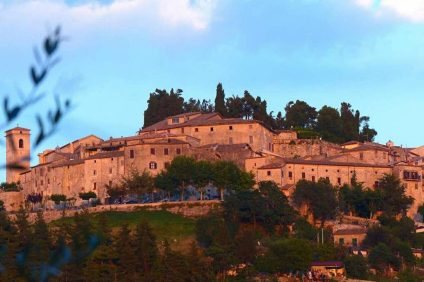Greccio, in the province of Rieti, is one of the most beautiful and famous medieval villages in Italy. Here, Saint Francis of Assisi founded a sanctuary in which he created the first nativity scene in history. Surrounded by the Sabine mountains, the town lies on the slopes of the Mount Lacerone, at 750 meters above sea level. This place, rich in culture and art, revives ancient traditions and folklore and rediscovers ancient flavours.

A bit of history
The origins of Greccio are very ancient. The village was founded by a colony from Greece, who fled destruction and wars, who found the ideal place to live here. For this reason, the name of the town was originally Grecia, to then become Grece, Grecce, and finally Greccio, around 1720. In the Middle Ages it was fortified and, today, the ancient village still retains all its charm intact, despite the devastation and looting perpetrated by Emperor Frederick II and the Napoleonic army. All around, the magnificent natural landscape captivates visitors, who cannot help but walk along the fascinating paths that climb through the dense woods. One of these paths leads to Chapel which was the first refuge of the poor man from Assisi, when he arrived in Greccio in 1209.

The castle and churches
In Greccio, signs of the past are visible in what remains of the fortified castle, built in the 1100th century, which was originally surrounded by walls and six towers. Around 1242, the castrum Greciae experienced a phase of great demographic and urban development, but in XNUMX it was destroyed by the troops of Frederick II of Swabia. Part of the original flooring and three of the six towers of the medieval walls remain of the manor, one of which was transformed into a bell tower in the XNUMXth century.

Right next to this tower stands the church of San Michele Arcangelo, dating back to the XNUMXth century and created from part of the castle. Despite having been destroyed and rebuilt several times, it preserves valuable paintings and frescoes from the sixteenth century. It is also rich in stucco and decorations church of Santa Maria del Giglio, which dominates the square at the foot of the village. In the historic center the “Path of the Artists”, along which, using the fresco technique, artists from all over the world have represented episodes from the life of Saint Francis on the walls of ancient houses. The renovation of the old facades of the houses overlooking the square, together with a beautiful sixteenth-century fountain, the artistic heritage of the village, enrich it, guaranteeing its historical and cultural identity. Near the town, there is the International Nativity Scene Museum, that it hosts treasures of art and craftsmanship by renowned artists of nativity art.

The Sanctuary and the nativity scene
The Sanctuary of Greccio, built by Saint Francis, is one of the most vivid testimonies of Greccio's ancient past. A place of profound spirituality, it is set in the bare rock. The original nucleus of the Sanctuary is the Chapel of the Nativity Scene where, according to tradition, Saint Francis represented, for the first time in the history of Christianity, the birth of Jesus. It was Christmas night in 1223.

This tradition is kept alive by the inhabitants of Greccio who, starting from 1972, stage a historical-theatrical re-enactment of that nativity scene. The Greccio nativity scene is made up of six living paintings and numerous people in medieval costumes participate. The performance takes place in an artificial amphitheater built in a square in front of the Sanctuary. It is a unique, unmissable opportunity that is repeated annually in the pre-Christmas period and up to the Epiphany.
(Photo: Municipality of Greccio; Greccio Nativity Scene, Facebook Pages)





